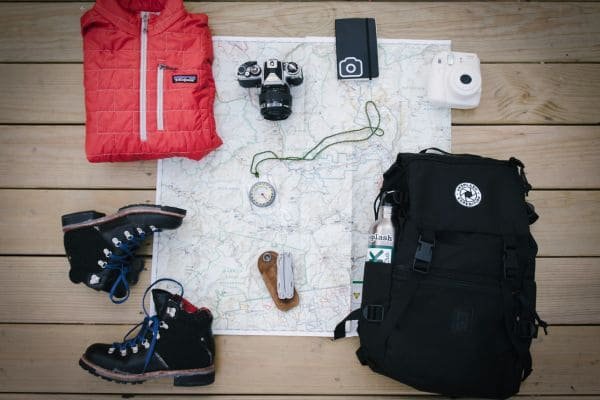Altitude Sickness
Understanding AMS, HAPE, and HACE in High-Altitude Hiking
High-altitude hiking can be an awe-inspiring experience, offering breathtaking views and a unique sense of accomplishment. However, as the elevation rises, so do the risks. High-altitude environments pose unique challenges for the human body due to the decreased levels of oxygen. Among the most serious concerns for high-altitude hikers are Acute Mountain Sickness (AMS), High-Altitude Pulmonary Edema (HAPE), and High-Altitude Cerebral Edema (HACE). These conditions can range from mild discomfort to life-threatening emergencies if left untreated. Understanding their symptoms, causes, and preventive measures is crucial for anyone venturing into high-altitude environments.
1. Acute Mountain Sickness (AMS)
What is AMS?
Acute Mountain Sickness, or AMS, is the most common altitude-related illness and affects many people when they ascend to altitudes above 2,500 meters (8,200 feet). As the altitude increases, the air becomes thinner, resulting in lower oxygen levels. For some, the body struggles to adapt to the reduced oxygen, leading to AMS. This condition can range from mild to severe, and it often serves as a warning that the body is not coping well with the altitude.
Symptoms of AMS
The symptoms of AMS typically begin within a few hours to a day after reaching a higher altitude and include:
-
Headache
-
Nausea and vomiting
-
Loss of appetite
-
Fatigue or weakness
-
Dizziness
In mild cases, these symptoms are uncomfortable but manageable. However, if they worsen or are left untreated, AMS can progress to more serious forms of altitude sickness, such as HAPE or HACE.
Causes and Risk Factors
AMS is caused by the decreased availability of oxygen at high altitudes. The faster one ascends to a high altitude, the greater the risk of developing AMS. Other risk factors include a previous history of AMS, physical exertion at high altitudes, and certain medical conditions. Importantly, fitness level does not necessarily protect against AMS—both seasoned athletes and beginners can be affected.
Treatment and Prevention of AMS
The primary treatment for AMS is to stop ascending and allow the body time to acclimatize. Rest, hydration, and avoiding alcohol can help relieve symptoms. Over-the-counter pain relievers may help alleviate headaches, while anti-nausea medication can help manage nausea. In more severe cases, descent to a lower altitude may be necessary.
Preventive measures include:
-
Gradual ascent: Avoid gaining more than 300-500 meters (1,000-1,600 feet) in altitude per day once above 2,500 meters.
-
Acclimatization days: Take rest days to allow your body to adapt to higher elevations.
-
Hydration: Staying well-hydrated can help manage altitude symptoms.
-
Medications: Drugs like acetazolamide (Diamox) may be prescribed to help with acclimatization, though it’s essential to consult with a doctor before using any medication.
2. High-Altitude Pulmonary Edema (HAPE)
What is HAPE?
High-Altitude Pulmonary Edema, or HAPE, is a more severe and potentially life-threatening altitude-related illness. It involves the accumulation of fluid in the lungs due to a combination of factors related to high-altitude exposure. HAPE can impair breathing and lead to oxygen deprivation in the body, a condition known as hypoxia. This condition usually occurs at altitudes above 3,000 meters (9,800 feet) and may develop over several days at high altitudes or within hours of a rapid ascent.
Symptoms of HAPE
The symptoms of HAPE include:
-
Shortness of breath at rest
-
A feeling of suffocation, especially when lying down
-
Persistent cough, often producing frothy or pink sputum
-
Rapid breathing and heart rate
-
Fatigue and weakness
-
Cyanosis (bluish color in lips or fingernails due to lack of oxygen)
HAPE requires immediate medical attention, as it can rapidly progress and become fatal if untreated.
Causes and Risk Factors
HAPE occurs when the lungs' blood vessels constrict due to low oxygen levels, which increases pressure and causes fluid to leak into the lungs. Rapid ascent, strenuous exercise at high altitude, cold exposure, and a previous history of HAPE increase the risk of this condition.
Treatment and Prevention of HAPE
The most effective treatment for HAPE is immediate descent to a lower altitude, ideally by at least 1,000 meters (3,300 feet) or more. Supplemental oxygen can help alleviate symptoms, and medications like nifedipine may be prescribed to reduce pulmonary pressure. In severe cases, hyperbaric chambers may be used if descent is not immediately possible.
Preventive measures include:
-
Gradual ascent and allowing time for acclimatization.
-
Avoiding physical exertion in the initial days at high altitude.
-
Keeping warm to prevent further constriction of blood vessels in the lungs.
-
Some individuals prone to HAPE may benefit from prophylactic medication prescribed by a doctor.
3. High-Altitude Cerebral Edema (HACE)
What is HACE?
High-Altitude Cerebral Edema, or HACE, is a rare but extremely dangerous form of altitude sickness that involves swelling of the brain due to fluid accumulation. HACE is considered a medical emergency and, if left untreated, can result in death within hours to days. It generally occurs at altitudes above 4,000 meters (13,000 feet) and is often the result of untreated or severe AMS.
Symptoms of HACE
The symptoms of HACE are serious and include:
-
Severe headache, often unresponsive to painkillers
-
Loss of coordination (ataxia), resulting in clumsiness or difficulty walking
-
Confusion, disorientation, or hallucinations
-
Changes in behavior or personality
-
Drowsiness and extreme fatigue
-
Coma (in severe cases)
If a hiker exhibits symptoms of HACE, immediate action is required to prevent irreversible damage or death.
Causes and Risk Factors
HACE is believed to be caused by an increase in pressure in the brain due to inadequate acclimatization. The swelling is thought to be due to fluid leakage from the brain’s blood vessels, similar to the mechanism of HAPE in the lungs. Risk factors include rapid ascent, lack of acclimatization, and previous altitude sickness.
Treatment and Prevention of HACE
The only effective treatment for HACE is immediate descent to a lower altitude. Supplemental oxygen should be administered if available, and medications like dexamethasone, a steroid that reduces brain swelling, may be administered in emergency situations. In cases where descent is not immediately possible, a portable hyperbaric chamber may be used to simulate lower altitude conditions.
Preventive measures include:
-
Slow, gradual ascent to allow for proper acclimatization.
-
Recognizing early signs of AMS and addressing them before they progress.
-
Taking rest days during high-altitude treks.
-
Using prophylactic medications under medical guidance if you have a history of severe altitude sickness.
Final Thoughts
Altitude sickness can pose a serious risk to high-altitude hikers and mountaineers, but with proper knowledge and precaution, these risks can be minimized. Recognizing the symptoms of AMS, HAPE, and HACE is critical for taking early action and preventing complications. The key to safe high-altitude hiking is patience, gradual ascent, and respecting the body’s limits. In the event that symptoms of altitude sickness arise, descending to a lower altitude is often the most effective solution. For anyone planning a high-altitude trek, preparation is essential. Understand your body’s limits, plan for adequate acclimatization, and consider consulting a medical professional about preventive measures and medications. With the right approach, high-altitude hiking can be a rewarding and safe experience.






3 Comments
Olivia Williams
May 21, 2024
Lorem ipsum dolor sit amet, consectetur adipisicing elit. Molestias sapiente ullam esse laudantium corporis pariatur.
Alexander Smith
May 22, 2024
Lorem ipsum dolor sit amet, consectetur adipisicing elit. Molestias sapiente ullam esse laudantium corporis pariatur.
Christopher Brown
May 22, 2024
Lorem ipsum dolor sit amet, consectetur adipisicing elit. Molestias sapiente ullam esse laudantium corporis pariatur.